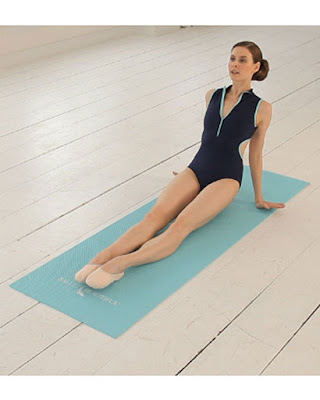
What Not to Do In ...
From Las Vegas to Paris, navigate the pitfalls less savvy tourists encounter with this guide to where to go and what to avoid.
Things Not to Do in Los Angeles
Don't...
Bother with Venice or Santa Monica Beaches
Venice Beach is known mostly for its wacky inhabitants who stroll the boardwalk along Ocean Front Walk. The outdoor freak show is entertaining for about 10 minutes, but eventually it starts feeling a little creepy. Plus, the beach itself is grungy at best. The Santa Monica beaches to the north are certainly less weird, but they're also much more crowded, thanks to tourist magnets like the seen-better-days Santa Monica Pier and the chain shops on the Third Street Promenade.

Instead…
Head to El Matador or Manhattan Beach
If you prefer a little serenity with your surf, head north from the Malibu Pier to the rugged, isolated beaches between Broad Beach and Decker Canyon roads. El Matador Beach, a secluded little cove with funky rock formations and plenty of parking, is a great place for a picnic or to catch the sunset. If you're looking for sun and sand but not necessarily solitude, head south from Malibu instead, to Manhattan Beach, a family-friendly stretch of sand with great surfing, a playground, and volleyball courts. This popular spot can be crowded, but the city does a stellar job of keeping the place pristine. And there are plenty of cool shops and fun cafés to explore on Manhattan Beach Boulevard, the area's main drag.
Don't...
Shell Out for Star Maps
Whether you pick up a $5 map from a vendor on Sunset or spend a few bucks more for a guided tour, you'll find that most of the information you'll get on celebrities is woefully out-of-date. Here's the thing: Most celebs don't actually live in Hollywood, or even Beverly Hills. They generally gravitate toward more secluded areas. The ones who do have homes in the thick of it treasure their privacy and have erected fences and hedges to foil looky-loos. So, skip an afternoon spent rubbernecking to catch a meager glimpse of a house where a star may or may not live or have lived.
Instead…
See Celebs in Their Natural Habitat
Serious stargazers should check into the Four Seasons Los Angeles at Beverly Hills and spend the day by the pool, where chances of spotting starlets are about as good as it gets. Or dine nearby at Madeo, a family-run Italian joint favored by the likes of David Beckham and Salma Hayek, which serves the best bolognese in town. Much of the Hollywood set (Tom Hanks, John Cusack, Minnie Driver, and Sean Penn, to name a few) is based in Malibu. For a sure thing, head west to the Malibu Country Mart, just off the Pacific Coast Highway—it's the go-to place for everything from yoga classes to Nobu sushi to the Coffee Bean & Tea Leaf.
Things Not to Do in London
Don't...
Hop on a sightseeing bus
Aboard one of the Original London Sightseeing Tour's open-top buses, you'll spend an inordinate amount of time staring at the backside of other buses while inhaling noxious fumes, and, if you're a family of four, pay $130 for the privilege. Many claim it is difficult to hear the tour guide over the noise of the traffic. The upper deck (where viewing is unhindered) is also often full, and the stops are not anywhere near as close to the attractions as they should be.

Instead…
Get on your bike
July 2010 saw the launch of London's first two cycle superhighways (dedicated bike lanes that bring you from outer London into the center) and the city's much-delayed and much-anticipated cycle hire scheme (modeled on the successful Paris Vélib program). Ten more superhighways will be launched by 2015; the self-service cycle hire offers 6,000 bikes that can be removed from around 400 docking stations, which are never more than 1,000 feet apart. In recent months, London has spawned a new breed of cycle repair shops-cum-cafés, such as Look Mum No Hands! in Clerkenwell.
Don't…
Visit Madame Tussauds
If the lines lasting up to three hours don't suck the life force out of you, the price of getting in to Madame Tussauds just might (around $42 for an adult). Once inside, you might enjoy the interactive exhibits, scary-as-hell Chamber of Horrors, and the Spirit of London ride (which takes you from Tudor times to the present) if it weren't for the jostling and frustrated crowds and staff. The biggest problem here seems to be that the management has no concept of crowd control or full capacity.
Instead…
Check out the brand-new galleries at the Museum of London
Revamped to the tune of over $30 million, the five new interactive galleries at the Museum of London recount 350 years of the city's history. Highlights are a Victorian shopping street and the Lord Mayor's gaudy gold State Coach. But the absolute must-see exhibit is a reconstructed Georgian pleasure garden (pictured), with mannequins adorned in wigs, masks, and period dress as well as digital projections re-creating the entertainment on offer at the time. Not only will you learn something and have fun, this museum, unlike Madame Tussauds, is entirely free.
Things Not to Do in Paris
Don't…
Spend all day at the Louvre or Musée d'Orsay
The Louvre and the Musée d'Orsay are Paris's most celebrated museums, and yes, they do house some famous works of art. But don't for a second think that they're your only—or, indeed, even your best—options. The lines to get in can be harrowing in high season, the crowds are exhausting, and the sheer quantity of art on display is overwhelming. If the prospect of beating back the hordes seems like it will detract from the experience (and, really, how could it not?), don't despair.

Instead…
Get to know Paris's lesser-known museums
Many of Paris's smaller museums contain equally important and beautiful art—and are often more pleasant, since you won't be elbowed out of the way by a photo-snapping swarm. You'll find Monet's famous Nymphéas (water lily) murals in the Musée de l'Orangerie (pictured), at the far end of the Tuileries Gardens. The Musée Marmottan is home to the world's largest collection of Monets. And the Musée Rodin, housed in a luminous villa with a lovely garden, is one of the most romantic museums in all of Paris. Not in the mood for an art lesson? There are plenty of museums in Paris that focus on lighter and frothier fare, including fashion, wine, and money. Once you've discovered the pleasures of these intimate galleries, you might be hard-pressed to bother with the Louvre at all.
Don't…
Seek out bohemian ambience on the Left Bank
Sartre and de Beauvoir may have loved Les Deux Magots on the Boulevard St. Germain, but these days, this onetime hangout of intellectuals has all the authenticity of Times Square. You're far more likely to find yourself cheek by jowl with your tourist brethren than eavesdropping on any famous philosophers. You may, however, find yourself delivering a tirade on the immorality of charging $16 for buttered toast and orange juice. Does gouging tourists for the privilege of sitting on a sidewalk mark the decline of civilization? Yes, indeed.
Instead…
Find the "real" Paris on the Canal St. Martin
Bobo (short for bourgeois bohemian) hipsters have laid claim to the area around the Canal St. Martin, a once-derelict part of the tenth arrondissement that now buzzes with cafés and hip boutiques, particularly along the Rue Beaurepaire. Settle at a sidewalk table at Chez Prune, the see-and-be-seen ground zero for this trendy Right Bank 'hood, sip your café crème, eavesdrop on the locals, and enjoy the views of the picturesque canal—and bask in the smug knowledge that you've found a corner of real Paris, far from the touristy hordes.
Things Not To Do in Las Vegas
Don't...
Use the Casino ATMs
Most casino ATMs charge anywhere from $2 to $6 (plus whatever your bank tacks on) for the pleasure of spitting out more money for you to lose.
Instead...
Do yourself a favor
Bring either bring plenty of cash or hit the BofA and WaMu-Chase machines off the Strip.
Don't..
Arrive at the Airport 30 Minutes Before Your Flight
OK, maybe if you are a veteran you can pull this off. However, security lines in Vegas are legendarily long. Furthermore, once you check your bags and clear security, there is a good chance you are going to have to hop on the monorail to get to your gate.
Instead...
allow yourself one and a half hours
While the Strip is only about five minutes from the airport, leave enough time to make your flight. Don't worry: There are plenty of Wheel of Fortune slots in the terminal if you happen to breeze through the security and monorail hurdles.
Things Not to Do in New York City
Don't...
Take a twilight carriage ride in Central Park
You may recall the scene in Manhattan where Woody Allen and Mariel Hemingway take a romantic, private, horse-drawn carriage ride through Central Park, quipping their way through the leafy quiet. We regret to inform you that your carriage ride will be nothing like that experience. The horse will seem tired, the driver's patter will be even less entertaining than Mia Farrow's memoirs, and you'll spend the entire ride crawling along the park's main drives, staring at the back of another carriage, and enduring dirty looks from locals and animal lovers.

Instead…
Get up early and walk through Central Park
The park is at its most magical in the morning, when the crowds are thin and the green lawns are fresh, and you'll want to wander off the main roads and explore its 843 acres at your own pace. You might even want to, you know, stop and smell some flowers—or at least something more aromatic than horse poo. So get up early one morning, grab a cup of joe and a roll from a street cart, and eat your breakfast walking some of the park's woodsier byways. Enter the park from either Fifth Avenue or Central Park West in the mid-Seventies, and head toward the center: This latitude offers easy access to some of the park's best features. You can drift around the marshy shores of the lake, climb Pilgrim Hill near the Conservatory Water, or stand still with a view to the east and watch for Pale Male and Lola, the famous red-tailed hawks who use an apartment building on Fifth Avenue as a launchpad for their own Central Park explorations.
Don't...
Eat at a restaurant in Times Square
We understand the slickster appeal of Times Square, with its gaudy neon, its aura of history, its unbridled commercialism. But we don't understand why anyone bothers to eat there. The Giuliani-era campaign to make Times Square safe for families and visitors had the side effect of attracting faceless national chains: Red Lobster, Applebee's, and Chevy's Fresh Mex hadn't set foot in New York City until they marched up 42nd Street. And guess what? The chains are exactly the same as the ones in the 'burbs—just more expensive.
Instead ...
Eat in Hell's Kitchen
Two blocks west of Times Square is Hell's Kitchen, a gentrified neighborhood of former tenements now populated by young actors, writers, and other up-and-comers. These people need reliable, inexpensive places to chow down, and Ninth Avenue is lined with obliging eateries that run the ethnic gamut from Vietnamese to Puerto Rican to Greek to Italian—ideal for a quick, affordable lunch between sightseeing stops, or for a pre- or post-theater bite. Try Pam Real Thai for an authentic taste of Bangkok, Chimichurri Grill for Argentine-style steak, Meskerem for savory Ethiopian food (pictured), or Esca for first-rate Italian seafood—or just walk up and down the avenue till you find something that appeals.








